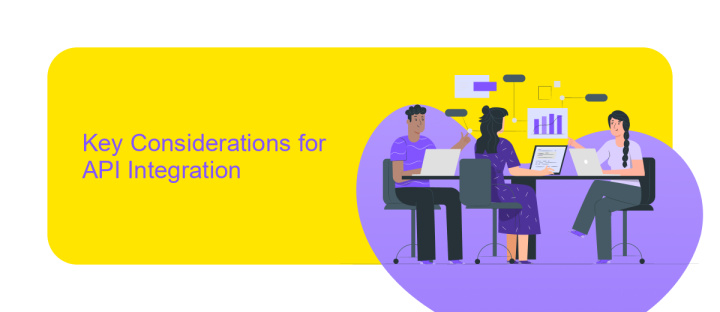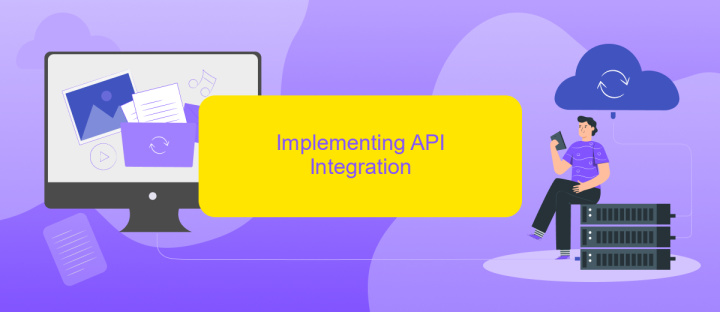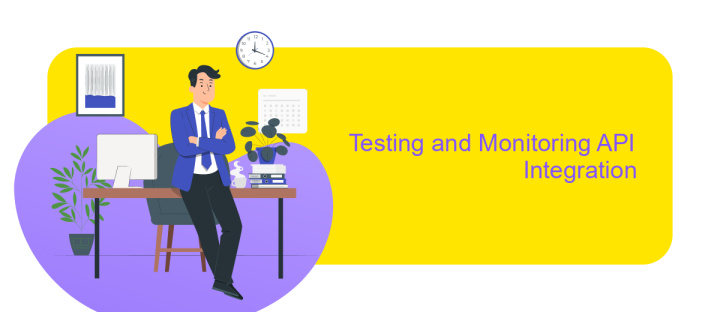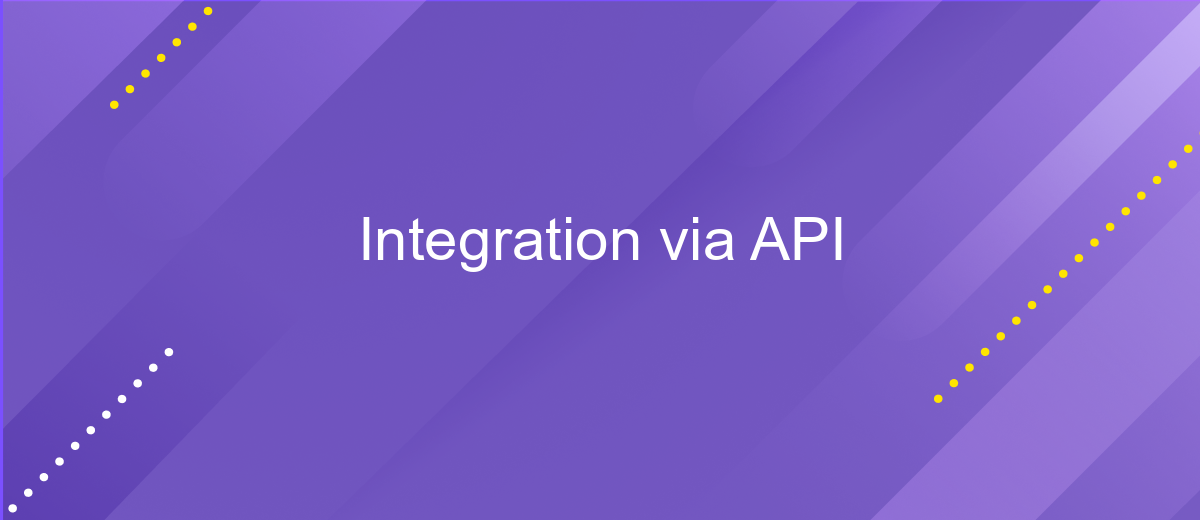Integration via API
In today's digital landscape, seamless data exchange and system interoperability are crucial for business success. Integration via Application Programming Interfaces (APIs) has emerged as a powerful solution, enabling diverse software applications to communicate and share data efficiently. This article explores the fundamentals of API integration, its benefits, and best practices for implementing robust and scalable API solutions that drive innovation and operational excellence across industries.
Understanding API Integration
API integration is a crucial aspect of modern software development, enabling different systems to communicate and share data seamlessly. It allows applications to access functionalities and data from other services, enhancing their capabilities without the need to build features from scratch. By leveraging APIs, businesses can streamline operations, improve user experiences, and foster innovation.
- Efficiency: APIs allow for faster development by utilizing existing services.
- Scalability: Easily scale applications by integrating with third-party solutions.
- Flexibility: Customize and extend functionalities to meet specific needs.
- Interoperability: Ensure systems can work together across different platforms.
- Security: Implement secure data exchange protocols to protect sensitive information.
Understanding API integration involves recognizing the types of APIs available, such as REST, SOAP, and GraphQL, each with its own set of protocols and use cases. Developers need to consider factors like authentication, data formats, and error handling when implementing API integrations. Proper documentation and testing are essential to ensure smooth and reliable interactions between systems. By mastering API integration, developers can create more dynamic and interconnected applications that meet the demands of today's digital landscape.
Key Considerations for API Integration

When embarking on API integration, it is crucial to thoroughly understand the API documentation provided by the service you are integrating with. This documentation typically outlines the endpoints, methods, and data formats that are essential for successful communication between systems. Ensuring compatibility with existing systems and understanding any rate limits or authentication requirements are vital steps in the integration process. Additionally, consider the scalability of the API to accommodate future growth and increased data loads, which can impact the performance of your application.
Another key consideration is the choice of tools and platforms to facilitate the integration. Services like ApiX-Drive can simplify this process by offering a user-friendly interface for connecting different applications without extensive coding knowledge. ApiX-Drive allows you to automate workflows and synchronize data across various platforms, enhancing operational efficiency. It's also important to monitor the integration continuously to ensure data accuracy and address any issues promptly. Regular updates and maintenance of the API and integration tools are necessary to adapt to changes and improve functionality over time.
Implementing API Integration

API integration is a crucial step for connecting different software systems and enabling them to communicate effectively. To ensure a seamless integration, it is essential to follow a structured approach that includes planning, development, and testing phases. By understanding the requirements and constraints of the systems involved, developers can design an integration that meets business needs and enhances functionality.
- Identify the APIs to be integrated and gather their documentation.
- Define the data flow and establish the endpoints for communication.
- Develop the integration logic, ensuring it handles errors and exceptions.
- Test the integration in a controlled environment to verify its reliability.
- Deploy the integration to the production environment and monitor its performance.
Successful API integration can significantly enhance the capabilities of a system, allowing for automation and improved data sharing. It is important to regularly monitor and maintain the integration to ensure it continues to function as expected. By following best practices and keeping abreast of any changes in the APIs, organizations can leverage API integration to drive efficiency and innovation.
Testing and Monitoring API Integration

Testing and monitoring API integration are crucial steps to ensure seamless functionality and reliability. During the testing phase, developers should focus on validating the API's functionality, performance, and security. This involves simulating various scenarios to identify potential issues that could disrupt the integration process.
Once the API passes the testing phase, continuous monitoring becomes essential to maintain optimal performance. Monitoring helps in early detection of anomalies and ensures that the API remains responsive to user demands. It also allows for the proactive management of any potential disruptions or downtimes.
- Conduct comprehensive unit and integration tests.
- Implement automated testing tools for efficiency.
- Monitor API response times and error rates.
- Set up alerts for unusual activity or performance drops.
- Regularly review and update the API documentation.
By integrating thorough testing and robust monitoring practices, organizations can enhance the reliability and efficiency of their API interactions. This proactive approach not only ensures a smooth user experience but also helps in maintaining the integrity of the system over time.


Best Practices and Troubleshooting
When integrating via API, ensure that you follow best practices to maintain seamless connectivity and data integrity. Start by thoroughly understanding the API documentation, which provides crucial information on endpoints, authentication, and error handling. Use version control to manage changes and avoid disruptions. Implement robust authentication methods like OAuth 2.0 to safeguard data. Regularly monitor API usage and performance to identify and address any issues promptly. Tools like ApiX-Drive can simplify the integration process by offering pre-configured connectors and automation features, reducing the need for extensive coding.
Troubleshooting API integrations often involves identifying the source of errors. Begin by checking the API response codes and logs for detailed error messages. Ensure that your network settings and firewall configurations allow API traffic. If you encounter rate limits, consider optimizing your API calls or requesting an increase from the API provider. Utilize sandbox environments for testing changes before deploying them to production. ApiX-Drive can assist in troubleshooting by providing insights into data flow and potential bottlenecks, helping you maintain a stable and efficient integration.
FAQ
What is API integration and why is it important?
How can I start integrating APIs for my business applications?
What are the common challenges faced during API integration?
How do I ensure the security of data during API integration?
Can I integrate APIs without having programming skills?
Time is the most valuable resource in today's business realities. By eliminating the routine from work processes, you will get more opportunities to implement the most daring plans and ideas. Choose – you can continue to waste time, money and nerves on inefficient solutions, or you can use ApiX-Drive, automating work processes and achieving results with minimal investment of money, effort and human resources.

